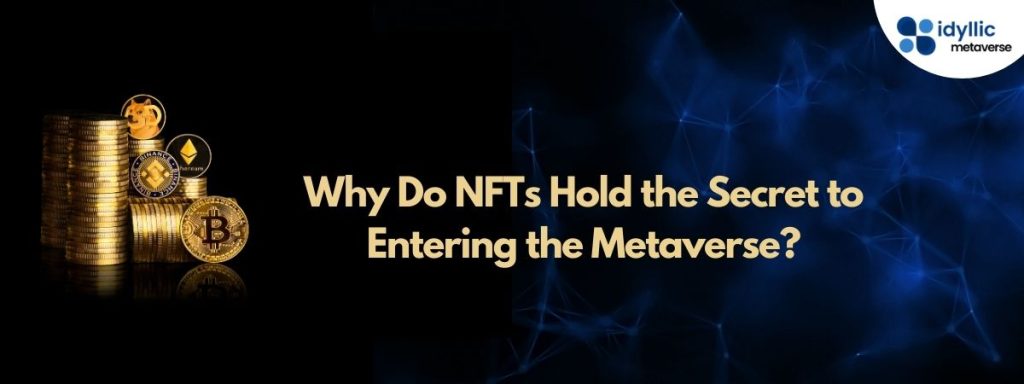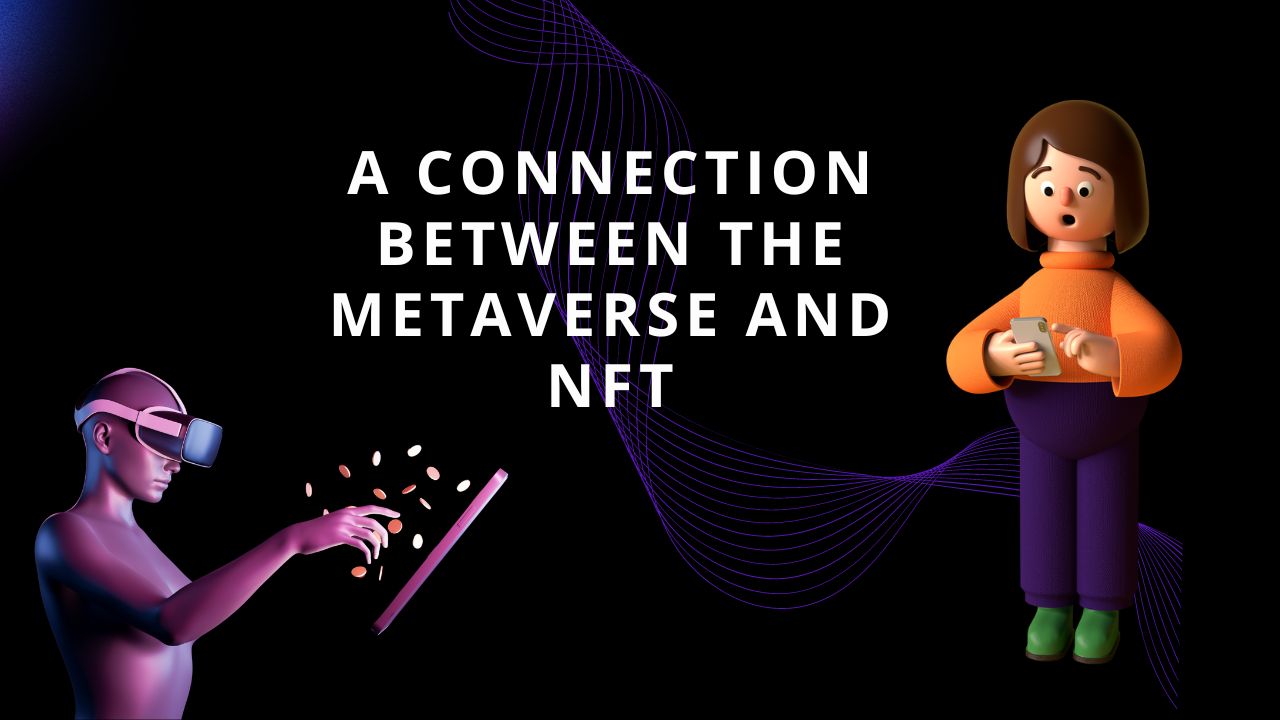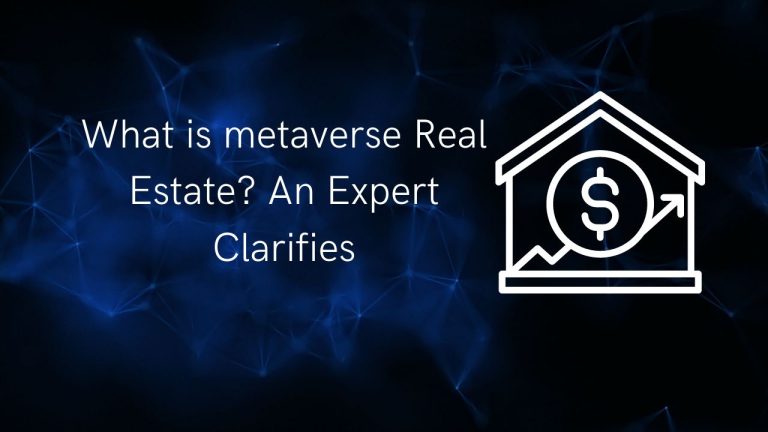the metaverse and NFT A connection between them.
Relation between Metaverse and NFT:
NFTs have been very popular recently as a mechanism to represent digital assets in a blockchain. NFTs have many applications, but one of the most well-liked is utilizing them to represent objects in virtual worlds or “metaverses.” In this post, we’ll look at the relationship between the metaverse and NFT and how they can perform effectively.
Define the NFTs.
Ownership of physical or digital assets can be represented via a type of cryptocurrency called NFTs (non-fungible tokens). They are ideal for representing objects in virtual worlds since they are unique and cannot be replaced by another token. NFTs can represent anything, including virtual items and creative works.
NFTs were in use before artificial words like those seen in VR. The use of NFTs for in-game items in mobile apps like Cryptocurrencies has grown in popularity, and entire virtual worlds have been built using platforms like Ethereum. Bitcoin seems to be another example of a digital asset that can be used to pay for services online. As NFTs offer a means of representing ownership of property in a virtual world, the metaverse is the obvious next step for NFTs.
Metaverse and NFT
The metaverse and NFT possibilities are so diverse that they include attending virtual concerts, traveling, shopping, making transactions, going to the movies, putting on clothes, changing the way we work, and so on.
This digital cosmos will broaden our horizons to include a much more interactive and well-promoted alternate reality. The fact that the metaverse has a full-fledged economy and spans both physical and virtual worlds means that it will be decentralized.
The main connection between the metaverse and NFT stems from this, as the two are related to digital assets and how they are valued.
Why Do NFTs Hold the Secret to Entering the Metaverse?
When discussing the integration of NFTs with the metaverse, there are a number of questions we might pose to ourselves. Can we enter the metaverse with NFTs? Will they be in control of determining how the metaverse develops? What function does the blockchain serve in these virtual worlds? Develop the strategy for metaverse and NFT.

NFTs, or non-fungible tokens, are a new type of digital asset, as we mentioned before. They are distinct, undivided, and unchangeable. The linkage between the metaverse and NFT is inevitable given the limitless trading opportunities it provides.
What Potential Benefits Do NFTs Offer in the Metaverse?
When compared to conventional ways of asset ownership in the metaverse, NFTs have many advantages. The most notable are listed below.
More Protective
The ability to hold and exchange virtual assets in a much more secure manner is one of the main benefits of employing NFTs in the metaverse. There is no possibility of fraud or theft because every transaction is recorded on the blockchain. This stands in stark contrast to more conventional approaches to trading and owning virtual goods, which are frequent targets of fraud and hacking.
Creates a shortage
Using NFT also has the effect of helping to foster the growth of scarcity. This is crucial for virtual worlds since it can help the idea of worth in objects. What’s more, singular objects, such as one-of-a-kind works of digital art, can be depicted by NFTs. Users may see the virtual environment as being more thrilling and authentic as a result.
Monetizes resources
Finally, NFTs offer a way to produce revenue from assets in the metaverse. The ability to raise money for the creation of fresh content is crucial for developers and creators. For businesses that operate in virtual worlds, NFTs can be used to create new revenue streams. Hence, the metaverse might develop into a more conducive setting for businesspeople and inventors.
Problems with NFT Use in the Metaverse
When employing NFTs in the metaverse, there are a few issues to take into account. One of the most important considerations is how to represent asset ownership. This is crucial for virtual worlds since it might be challenging to establish ownership in these settings. How to make sure NFTs are used in a way that doesn’t lead to inflation presents another difficulty.
It is important to consider the purchasing and selling processes for NFTs. For instance, will commerce take place between users directly or through a central exchange?
When employing NFTs in the metaverse, all of these issues must be taken into account. These are not insurmountable, though, and numerous projects are already working on solutions.
FAQS:
What impact does NFT have on the metaverse?
NFTs are typically necessary to forge identities, integrate into communities, and participate in virtual social interactions. In the metaverse, people can transmit their purchases and sales of goods online. The currency needed to participate in the virtual metaverse is digital assets.
Does the metaverse include NFT?
One of the metaverse’s fastest-growing subsectors is non-fungible tokens (NFTs), which appeal to people’s curiosity, invention, and investment desire for digital art collections. NFTs are digital assets that simulate real-world objects including artwork, music, in-game items, and films.
What problems can NFTs answer on a global scale?
For everything from sports and music to TV and cinema, NFTs build a bridge between the crypto sphere and the real world. With strong rules and features like taxes and access rights built into the design, NFTs can address unique challenges or pain points like delivery, ownership, and pay.
What have you found about NFT and the metaverse?
The concepts of the metaverse and NFT are revolutionizing how the internet will operate. The key distinction between the metaverse and NFT is the two concepts’ basic definitions. The metaverse and NFT is a separate virtual environment, whereas non-fungible tokens are a subset of virtual tokens.
What is the difference between metaverse and NFT coins?
These are essentially one-of-a-kind digital objects in which the token’s ownership and other details are encoded. Digital assets known as non-fungible tokens, or NFTs, are kept on a blockchain, the same platform that powers cryptocurrencies like Bitcoin.
Conclusion
NFTs hold a wealth of promise in the metaverse. They provide a way of illustrating asset ownership, creating scarcity, and generating revenue from content. However, there are still certain concerns that need to be considered, such as how to represent ownership and prevent inflation, even though there are already numerous initiatives working on answers. Yet, if these challenges can be overcome, NFTs might contribute significantly to the growth of virtual worlds in the future.






